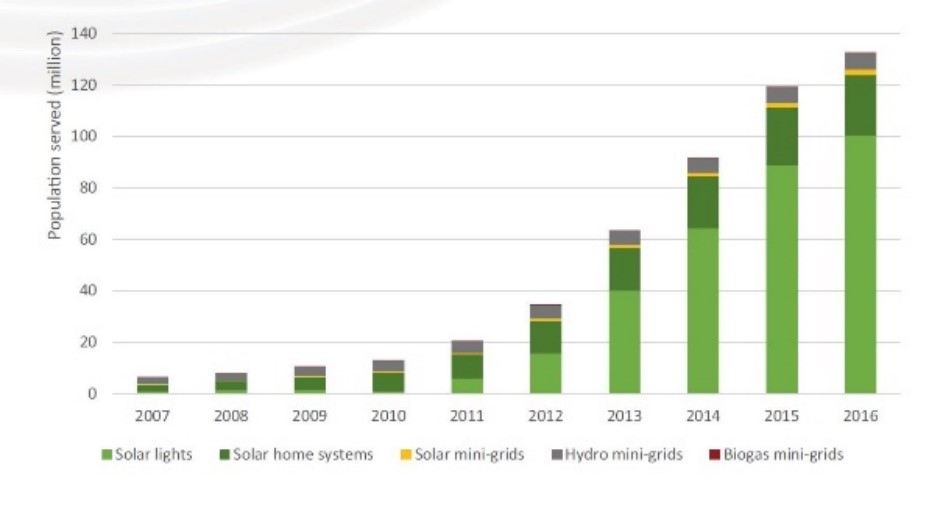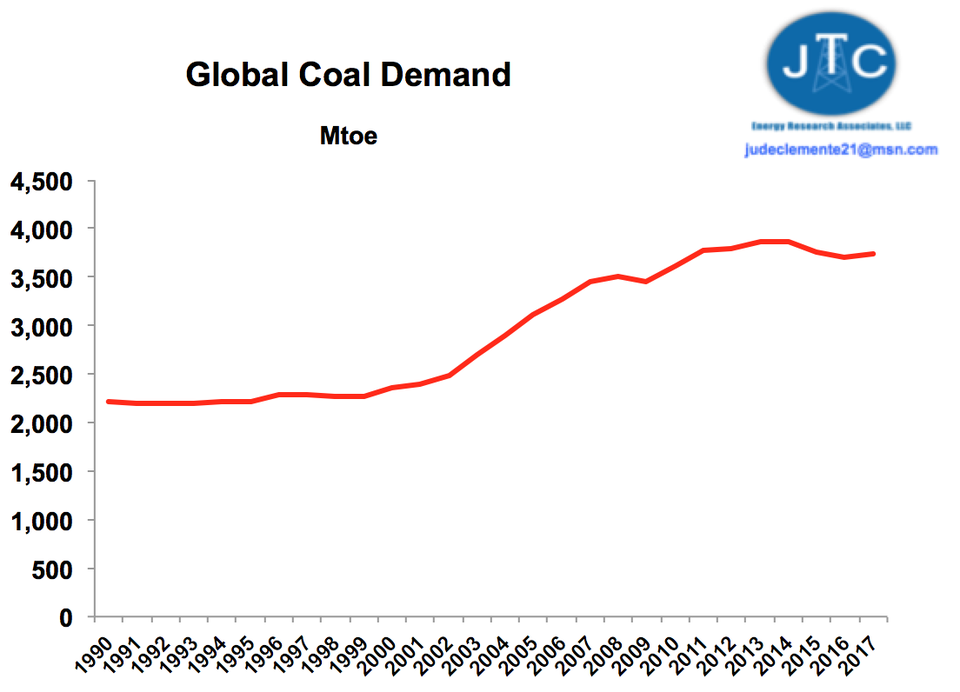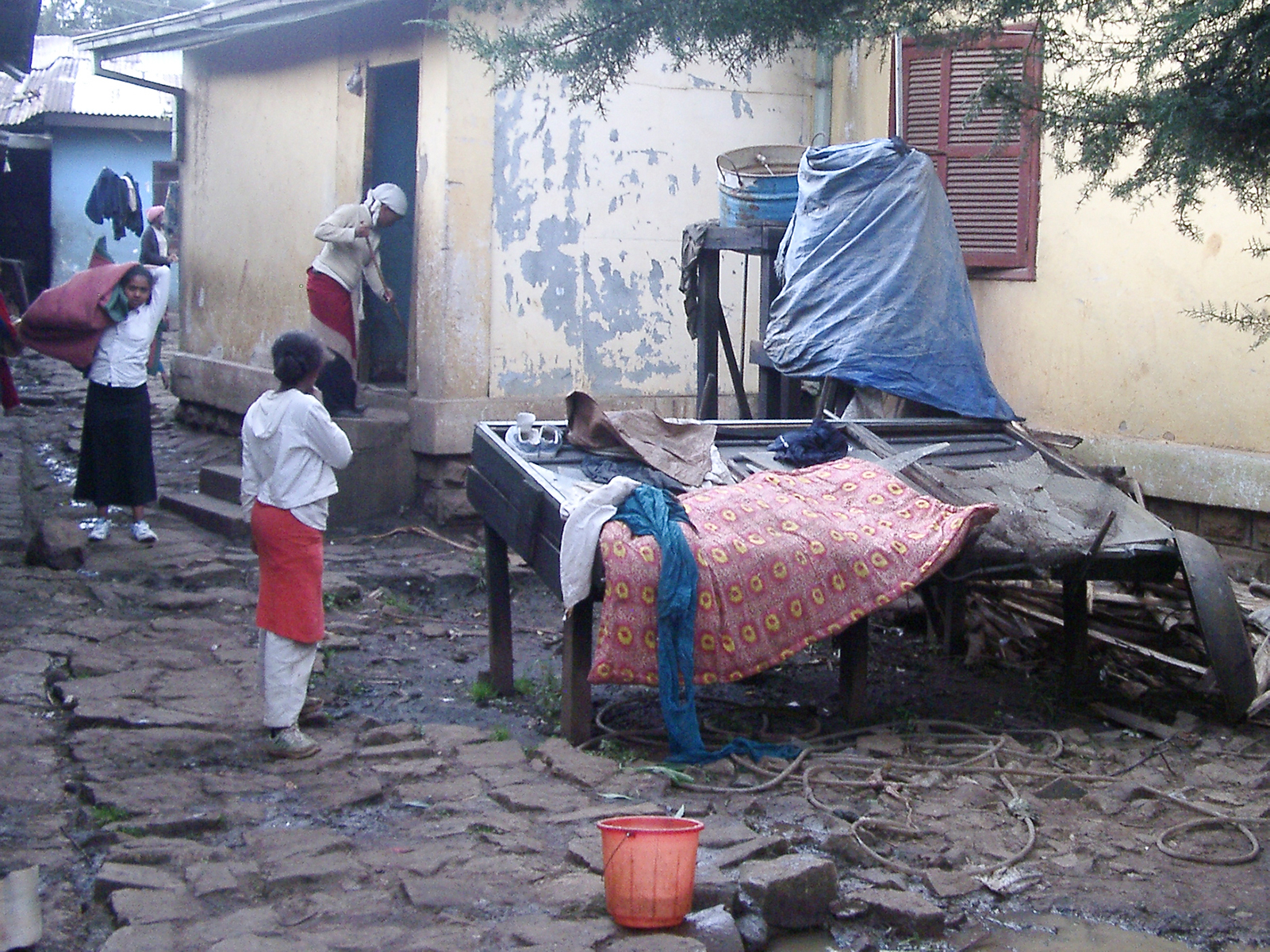In the first years of this century, when inexpensive cell phones spread low-cost, ubiquitous communications around the world, another amazing thing happened: the rationale for wiring the developing world for telephones vanished. Cellular technology rapidly leapfrogged old-timey telecom’s slow-motion efforts to wire remote outposts (in Africa, for instance: 2004, 2009, Pew 2015), providing phone, and later Internet, banking, and other services where they had never existed before. No matter what you think of resulting social changes, nobody mourned the utility poles, wire, labor, and time not spent on a telephone grid.
A similar revolution in energy has even more potential to reduce wasteful infrastructure and emissions, and establish a solid basis for sustainable energy around the world. “Off-Grid Rewable Energy Solutions” (download), a report released last month by the International Renewable Energy Agency (IRENA), demonstrates considerable momentum in the movement to generate power locally, outside the legacy webs of wires connecting everyone to centralized, fossil-burning power plants.

This development doesn’t arrive a minute too soon — unbelievably, the global market for coal continued to grow last year even as the consequences of burning fossil fuels have become more and more clear.

(Thanks to Forbes for a graph that looks like it’s got the century wrong.)
Ready to Scale
Of course, decentralized power is nothing new. Windmills have been used to pump water and move cogs for 1,500 years. The water wheel is still hundreds of years older. In recent decades, small-scale solar has joined these old technologies to begin delivering electricity far from any grids, creating new communications possibilities and also aiming to replace the burning of wood, coal, and other materials for cooking and home heating, and reduce burdens of these on respiratory health.

Solar has sometimes been better in theory than in practice. This glass-encased array was provided by a Dutch NGO to an orphanage in the outskirts of Addis Ababa, Ethiopia. Intended to power the bare light bulbs hanging above living spaces, the solar array soon stopped working and its treacherous shards of glass became useful only for drying laundry in the sun. Today, however, photovoltaic cells are remarkable for their lack of moving or breakable parts, promising zero maintenance cost over time — a big part of why solar energy may soon overtake all other energy sources for cost-effectiveness on all scales. (2006)
As solar technology has improved, we’ve begun to see hints of scalability, including market-based solutions like the delivery of lanterns that combined solar cells with super-efficient LED lights in order to reduce reliance on kerosene, candles, and other expensive and dangerous lighting fuels in countries such as Malawi.
Today, energy storage remains tricky, but the cost of a kilowatt of solar continues to drop at a rate of 12% year-over-year, meaning that every year, shoveling coal into furnaces to push power into wires is as crazy as it sounds.
Aside from being cleaner and more efficient, decentralizing power may have other important positive side effects in less stable areas, improving energy security by removing grids and large plants from the target lists of terrorists or warring nations
The development of off-grid power has the possibility not just to energize remote places — but to begin electrification without the inefficiencies of remote power delivery and establishing systems based permanently on renewable energy sources.
Case Studies
According to the above IRENA report, Asia leads the world in off-grid and small-grid power deployments. The organization highlights six different case studies in a separate report, all of them speaking to the power of not waiting for a wire to come from a dinosaur-burning power plant — but instead, generating the power cleanly and locally… and building from there.

in 2004, 1001fontaines installed 164 solar kiosks to bring fresh, clean water to remote villages in Cambodia — pumping and filtering groundwater and river water with additional UV purification. With 2018 technology, projects can provide critical services but also establish a foothold for infrastructure based on renewable energy.

0 Comments